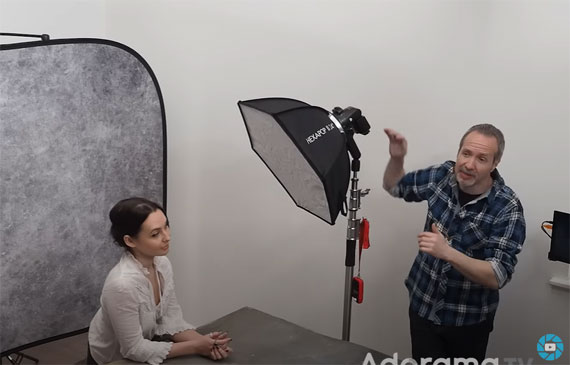In this recent video, Gavin Hoey explains that speed lights are an excellent option for hair lights because they are small, portable, and easy to maneuver. However, he notes that they can be challenging to use because they do not have a modeling lamp, which makes it difficult to see where the light will fall. To compensate for this, Hoey recommends taking test shots and adjusting the power and positioning of the speed light as needed:
Hoey also discusses the importance of setting up the key light first and then adding the hair light to fill in the shadows. He demonstrates using a bare speed light as a hair light, which creates a harsh, unflattering light on the subject’s hair. To improve the result, Hoey switches to using a strip box, which creates a softer, more diffused light that looks much more pleasing.
Understanding Speedlights
Speedlights, also known as on-camera flashes, have unique properties that make them suitable as hair lights. Although the tutorial focused on speedlights, the principles can be applied to any light source. A significant drawback of speedlights is the lack of a modeling lamp, making it challenging to see where the light will fall, leading to some trial and error.
Setting Up Your Key Light
Before setting up your hair light, it is crucial to get your key light right. This is important because the hair light will act as a fill light and must be balanced with the key light. Hoey used a Flashpoint X1 as his key light and set it to a quarter power for his demonstration.
Using a Bare Speedlight as a Hair Light
Hoey started by using a bare speedlight as a hair light, setting it at 1/8 power. He demonstrated how zooming in on the speedlight could condense the light and prevent it from spreading too much. However, the bare speedlight produced harsh shadows, revealing the problem of using a hard light source.
In addition to demonstrating how to use a hair light to light the subject’s hair, Hoey also shows how to use it as a background light and a key light. He explains that by adjusting the power and positioning of the hair light, you can create a variety of different looks and moods in your photos.
Overall, the video provides an excellent overview of how to use speed lights as hair lights and offers valuable tips and techniques for photographers looking to improve their lighting skills.
Like This Article?
Don't Miss The Next One!
Join over 100,000 photographers of all experience levels who receive our free photography tips and articles to stay current:







Leave a Reply